7 Steps Of Guppy Fish Breeding And Caring
Guppy fish breeding is simple compared to other fish breeds. Female guppy fish are not laying eggs, male guppy fish are not fertilizing eggs, and guppies are livebearers. Breeding, feeding, and caring are the main 3 things to consider when breeding guppies. Guppy fish breeders have their unique method. You can find it below.
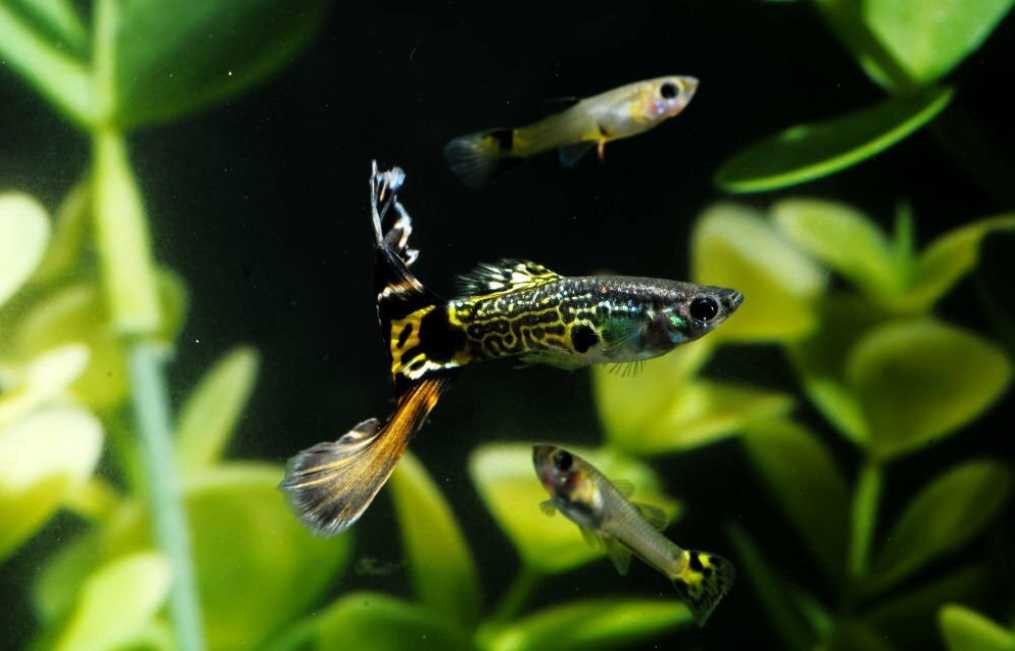
Table of Contents
- Set Up A Separate Guppy Breeding Tank
- Condition The Guppy Breeding Pair
- Introduce The Mating Pair To The Breeding Tank
- Provide Hiding Places And Plants
- Monitor And Remove Adult Fish
- Separate The Fry From Adults
- Feed And Care For The Fry
- Timeline For Breeding Guppy Fish
- How To Set The Perfect pH For Breeding Guppy Fish?
- Do Guppy Fish Breed Easily?
- Can Guppy Fish Breed In A Community Tank?
- Breeding Frequency Of Guppy Fish
- When Can Guppy Fish Start Breeding?
- The Gestation Period Of A Guppy Fish
- Conclusion
Set Up A Separate Guppy Breeding Tank
Set up a separate breeding tank to successfully breed Guppies. Set up a separate 20-30 gallon aquarium dedicated solely to Guppy reproduction. This spacious 50.5″ x 12.5″ x 21.3″ tank allows the adult Guppies to swim freely and provides room for up to 100 growing fry.
Ensure the water has a pH between 7.5-8.5 and a temperature of 78-82°F (25.5°C -27.5°C). The Orlushy Submersible Aquarium Heater, with its 50W output, efficiently maintains the ideal temperature range. For filtration, use the quiet Hygger Aquarium Double Sponge Filter rated for 20-55 gallon tanks to avoid strong currents that stress Guppies.
Before introducing the Guppies, cycle the tank for 4-6 weeks to grow beneficial bacteria that convert ammonia and nitrites into less toxic nitrates. Layer the bottom with soft, rounded aquarium gravel or sand at least 2 inches deep, avoiding sharp decor that could injure the Guppies’ delicate fins and tails. With this optimized 20-30 gallon aquarium, you can add a male and female Guppy pair and watch the successful Guppy breeding begin.
Condition The Guppy Breeding Pair
Condition the Guppy breeding pair before adding it to the separate guppy breed fish tank. Here are some more details for conditioning the breeding pair.
Provide the breeding pair a varied diet of premium foods like Omega One Super Color Flakes, Hikari Tropical Micro Pellets, and live foods such as Hikari Bio-Pure Freeze Dried Brine Shrimp to optimize their health. Feed them 2-3 small meals daily, giving them only enough food to finish within 2-3 minutes. This prevents overfeeding and water fouling.
Maintain excellent water quality in the 20-30 gallon breeding tank, performing 25% water changes weekly and scrubbing algae from surfaces. Use the FRESHWATER MASTER TEST KIT to verify that pH stays between 7.5-8.5 and temperature is steady at 78-82°F. The aquarium heater allows easy temperature adjustments.
Observe the Guppies closely for signs of disease like clamped fins, loss of appetite, and skin lesions. Remove and quarantine any sick Guppies promptly. With superb nutrition, clean water, and quick treatment of illnesses, your Guppies will be in peak condition for spawning.
Introduce The Mating Pair To The Breeding Tank
Introduce the mating pair to the guppy breeding tank once the breeding tank condition time is complete. Here are some specific tips for successfully introducing the mating pair.
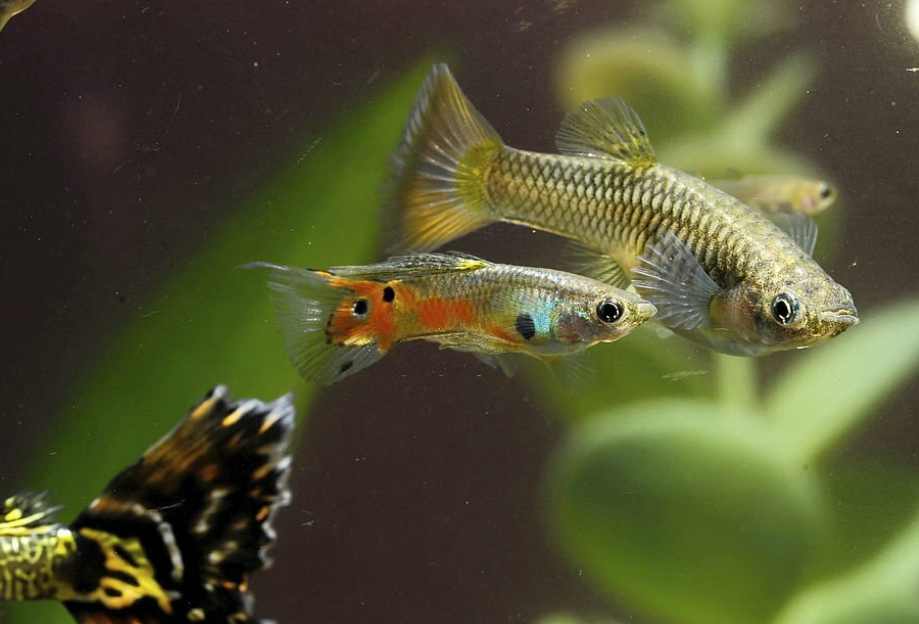
Slowly acclimate the adult Guppies to the breeding tank over 30-60 minutes by floating their containers to equalize temperatures and adding small amounts of the new tank water every 10 minutes. Once acclimated, gently release one male and 2-3 females into the cycled 20-30 gallon aquarium.
Closely observe the behavior of the mating group for the first few hours. Remove any overly aggressive males that relentlessly chase or nip at females. A 1:2 or 1:3 male-to-female ratio prevents harassment of solitary females.
Over the next few days, continue monitoring for signs of stress like “rapid breathing, lying or hiding.” Perform regular 25% water changes and supplement their premium diet with live brine shrimp for ideal conditioning. Within 1-2 weeks, the properly introduced Guppies should begin exhibiting courtship behavior, indicating they are well-adjusted and ready to breed.
Provide Hiding Places And Plants
Hide places and plants are needed when guppy pairs start mating. Adding hiding places and plants can reduce female stress, fear, and unfamiliar situations. Here are some specific recommendations for aquascaping the Guppy breeding tank.
Incorporate natural live plants like Java Moss, Anubias, and Java Fern to offer hiding and spawning sites. Anchor Anubias and Java Fern to driftwood or rocks while allowing the soft Java Moss to float freely. These low-light plants thrive without unique fertilization.
Add 2-3 artificial decor caves at least 4 inches tall to become secluded breeding spots. However, leave 60% of the tank with open swimming space so the long-finned Guppies can freely move about.
Place silk plants and floating plants like “hornwort, Duckweed, Red Root Floater, and Water Lettuce” toward the back and sides to create dense areas for fry to retreat safely. But avoid overcrowding the entire aquarium to reduce debris buildup.
Trim and thin the live plants weekly during water changes to control growth and remove dying vegetation. With this balanced aquascape of live plants, decor, and open areas, the Guppies have the ideal breeding environment.
Monitor And Remove Adult Fish
Monitor and Remove adult guppy fish once you notice Guppy fries in your fish tank. Here are some tips for monitoring the tank and handling the adult fish after spawning.
Check the breeding tank daily for signs that Guppies have given birth, like darting 1/4 inch fry or a noticeable increase in tiny fish. The gestation period is 4-6 weeks, so birth should occur shortly after introduction.
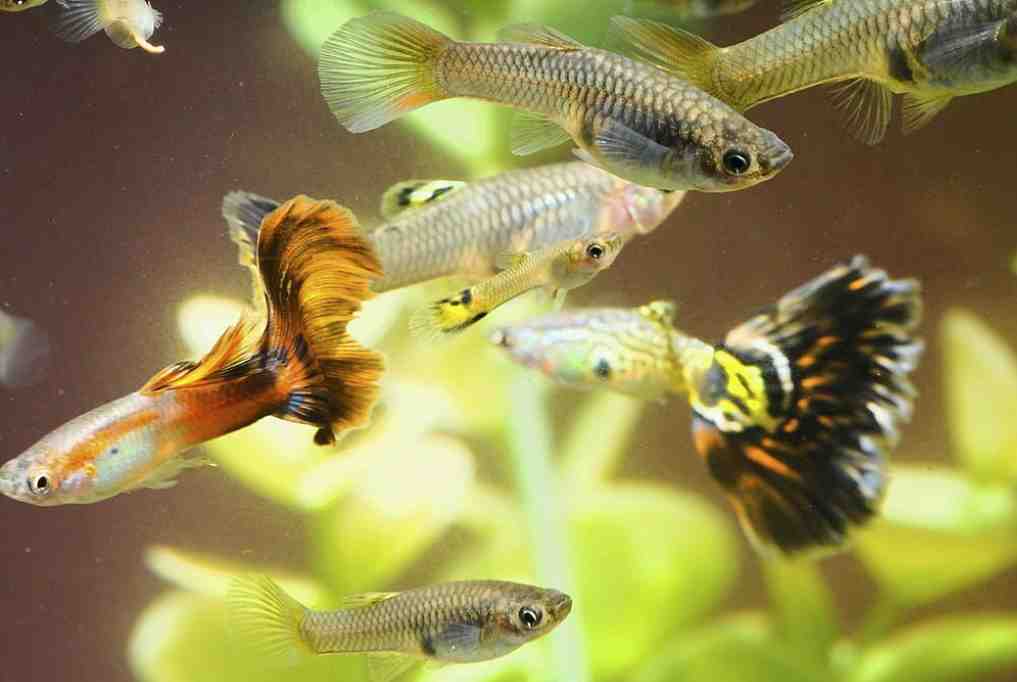
As soon as fry appears, use a net to gently but swiftly remove all adult Guppies back to the main tank. Separating the parents prevents them from eating the newborn fry.
Continue feeding the adult Guppies their premium diet in the main tank and watch for signs of stress after breeding. Perform extra water changes and monitor water parameters closely.
With the adults removed, the fry is vulnerable to water quality issues. Keep the breeding tank pristine by changing 10% of the water daily and siphoning waste from the substrate.
Keep details like the date of birth, number of fry produced, and any tank observations. These breeding records help refine techniques and provide helpful information for successive Guppy fish spawnings.
Separate The Fry From Adults
Separate the fry from adults and feeding them is essential. Here are some best practices for separating Guppy fry into their safe enclosure.
Use a fine mesh net to gently scoop out the 1/4-inch fry from the breeding tank, careful not to harm their fragile bodies. Move them into a separate 10-20 gallon rearing tank with identical water parameters as the breeding tank.
Alternatively, utilize a clear plastic breeding box or partition inserted into the breeding tank to isolate the fry. This allows easy monitoring without requiring a whole new setup.
Group fry of similar sizes together as they grow to prevent larger individuals from attacking smaller, more vulnerable tank mates. Avoid overcrowding by moving size groups into bigger tanks as needed.
Inspect the fry daily to ensure they are active, eating, and disease-free. Perform frequent 10% water changes in the rearing tank or breeding box to maintain clean water, which is especially crucial for the fry’s survival.
Once the fry reaches adult size over 2-3 months, they can be relocated into the main community aquarium, where their larger size protects them from predation.
www.tinyfishtank.com
Feed And Care For The Fry
Here are some tips for feed and caring for Guppy fry.
Feed the fry newly hatched “brine shrimp, infusoria, or micro-bread worms” several times a day in small portions. This nutritious diet fuels their rapid growth.
Perform 10%-25% water changes 1-2 times weekly, using a siphon to remove waste while avoiding suctioning up the tiny fry. Keep a close eye on water parameters, as fry are vulnerable to toxins.
Observe growth rate and activity level to ensure proper development. The fry should double in size within 2-3 weeks. Lethargy, poor growth, or high mortality likely indicates an issue with water quality or diet.
As the fry mature over 6-8 weeks, slowly transition their diet to finely crushed flakes, then small pellets. Transfer size groups to larger rearing tanks to accommodate their growing bodies. With diligent care and feeding, the Guppy fry will grow into juvenile fish ready to join the main aquarium community in 2-3 months.
Timeline For Breeding Guppy Fish
Here is a helpful timeline covering the key stages of breeding Guppy fish.
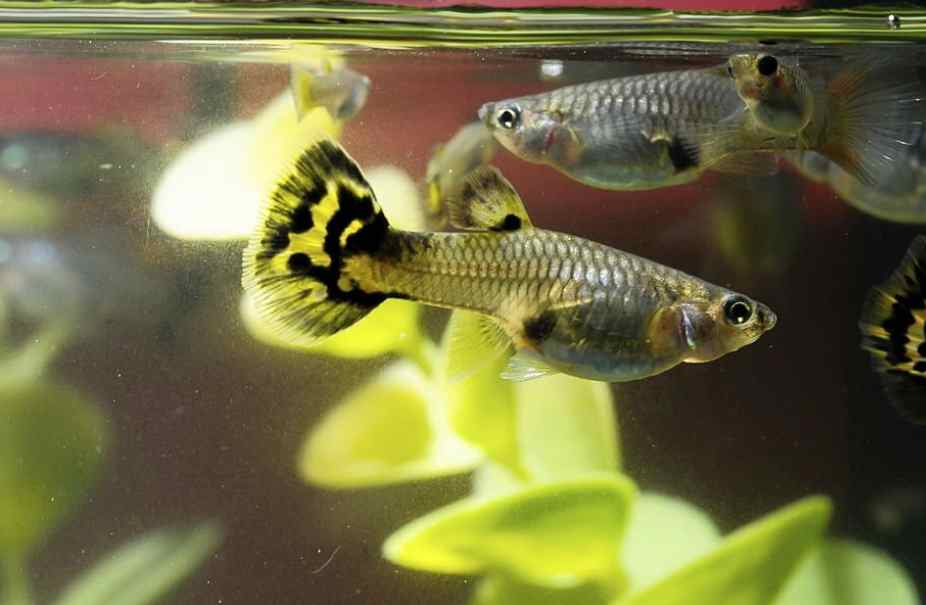
Breeding Stage – Duration
01. Set Up 20-30 Gallon Breeding Tank – 4-6 weeks (for nitrogen cycle establishment)
02. Condition Adult Guppies With Premium Diet – 1-2 weeks
03. Introduce Conditioned Adults (1 male & 2-3 females) – Immediately begin mating
04. Provide Live Plants, Decor, and Open Space – Can be added before fish introduction
05. Monitor Tank & Remove Adults After Fry Birth – Take adults out as soon as fry appear
06. Separate 1⁄4 Inch Fry into Rearing Tank – Right after removing adults
07. Feed Fry 5+ Small Meals Daily – 3-6 months until maturity
08. Perform 10% Fry Tank Water Changes – 1-2 times per week
09. Transition Fry Diet Over 2 Months – From first bites to flakes & pellets
10. Move Juvenile Fish to Main Tank – After 3-6 months when 1-2 inches long
Following this schedule of setting up the breeding tank, introducing conditioned adults, separating the resulting fry, and properly feeding and housing the fry as they mature, you can expect a successful first Guppy fish breeding experience!
How To Set The Perfect pH For Breeding Guppy Fish?
Setting and maintaining the proper pH is essential in the guppy breeding tank. Here are some tips for keeping the ideal 7.5-8.5 pH range for Guppy breeding.
- Test the pH using an accurate kit like the FRESHWATER MASTER TEST KIT. This liquid test provides exact pH readings.
- If the pH is too low, gradually raise it by adding API Proper pH 8.2, an all-natural mineral supplement that safely lifts pH.
- Place a mesh bag with 1-2 tablespoons of crushed coral or dolomite limestone in the tank’s filter. As it slowly dissolves, the minerals boost pH.
- For smaller pH increases, use baking soda (sodium bicarbonate). Add only 1/8 teaspoon over several days to avoid stressing fish.
- Replace water with an ideal 7.5-8.5 pH matched to the tank when changing water. Consistent parameters are key.
- Always make pH adjustments slowly over 4-5 days. Sudden shifts above 0.3 pH units daily can harm Guppies. Frequent testing ensures stable parameters.
With a step-wise approach to reaching and maintaining the optimal 7.5-8.5 pH, the Guppies will thrive in this healthy breeding environment.
Do Guppy Fish Breed Easily?
Yes. Guppies can breed more quickly than other fish breeds. Guppies are effortless fish to breed for several reasons.
- Guppies are prolific live-bearing fish, not egg-layers. A single mating results in multiple fry batches over several months, as females can store sperm.
- No particular pairing is required – any healthy adult male and female Guppy will readily breed together when conditions are right.
- Guppies are undemanding about breeding requirements. Providing good water quality, adequate nutrition, and room to swim triggers their instinct to reproduce.
- Fry develop inside the female and emerge independent, eliminating egg-hatching challenges. Newborn fries are ready-to-eat prepared foods.
- Guppies reach sexual maturity quickly, some as early as 4-5 months old. Generations can be produced rapidly.
So with a basic “20-30 gallon tank, sponge filter, hiding spots, heater keeping water at 78-82°F, and pH between 7.5-8.5” ” guppies will exponentially breed in captivity with no effort required.
Can Guppy Fish Breed In A Community Tank?
Yes. Guppies can breed quickly in the community tanks. While Guppies can breed in community tanks, Experts do not recommend it to maximize fry survival and successful reproduction.
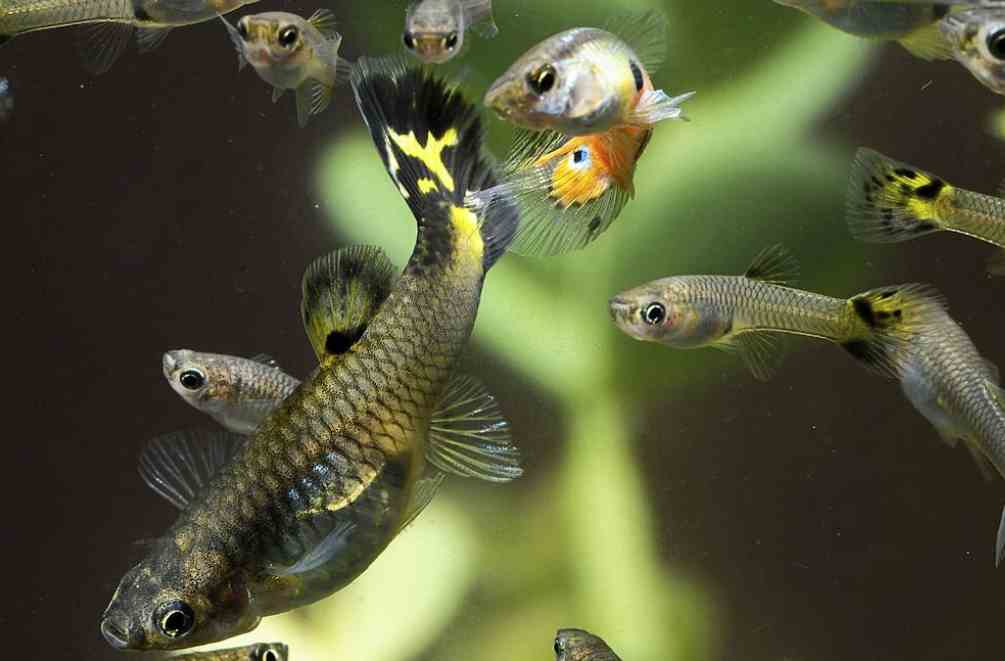
- Other fish species will likely consume the tiny newborn fry as an easy meal before they can hide, drastically reducing numbers.
- Tankmates may harass mating Guppies, interrupt courtship, or compete for prime spawning sites among plants and decor.
- The presence and activity of other fish can stress breeding Guppies, resulting in small brood sizes or even abandoned spawnings.
- A community tank offers little control over critical factors like water parameters and aquascaping needed to optimize Guppy breeding.
Breeding Guppies have the highest chance of success when provided in a separate, species-only tank. This allows for total control over conditions, secluded spawning sites, and protection of vulnerable fry until they mature. While Guppies can reproduce in community settings, a dedicated breeding tank is best for prolific production.
Breeding Frequency Of Guppy Fish
Guppy fish have an incredibly high breeding frequency. Female Guppies can store sperm internally for up to 6 months after a single mating. This allows for continuous fertilization of new eggs. The gestation period is 4-6 weeks. So, females can produce a new brood of fry every 30 days or so.
With optimal tank conditions, a female can reproduce monthly for most of her 2-3 year lifespan. A single mating can result in up to 6 fry batches over several months, thanks to sperm storage. A female Guppy can produce 60-100 fry in ideal settings every 30 days. That’s 720-1200 fry per year!
So, a single female can give birth monthly to large broods of fry. This high frequency is why Guppies are prolific aquarium fish great for populating community tanks or feeder fish production. Their continuous reproduction makes them fascinating fish to breed.
When Can Guppy Fish Start Breeding?
Guppy fish reach sexual maturity and can start breeding relatively young.
- Guppies typically become capable of reproducing around 3-6 months old. Growth rate impacts exact timing.
- Clear gender differences mark maturity – males develop a gonopodium, a pointed anal fin used to fertilize females.
- Guppies sexually mature once they reach about 1.5-2 inches in length. Fast-growing individuals may get this size at 3 months.
- Ideal water parameters (78-82°F, pH 7.5-8.5) and a protein-rich diet will promote faster growth and earlier breeding maturity.
- Females tend to mature slightly later than males. But once mature, both can begin reproducing.
So, with proper care, a home-bred generation of Guppies can start reproducing at only 3-6 months old. Their early maturation makes breeding scalable in short timeframes.
The Gestation Period Of A Guppy Fish
The typical gestation period for Guppy fish is 60-70 days. Guppies can stay pregnant for 2-2.5 months before giving birth.
- Warmer temperatures of 80°F may shorten gestation to around 60 days.
- Cooler 76°F water can extend the period up to 70 days.
- Larger, healthier females tend to have slightly shorter gestation periods.
- Females can store sperm to continue fertilizing eggs even while pregnant, allowing rapid successive pregnancies.
- A visibly swollen abdomen and increased appetite signal a pregnant Guppy.
- Brood sizes range from 20-100+ fry depending on the individual female’s size and age.
In optimal 80°F water, expect a gestation period of 2 months. However, cooler temperatures may prolong the period by 1-2 weeks for each pregnancy.
Conclusion
Breeding Guppy fish is more effortless than other breeds, and you must set up a separate fish tank for breeding. Always arrange your breeding tank with the proper setup and the suitable water condition. Check the water parameters using the right tools and add breeding guppy pairs to the breeding tank.
Check your fish tank regularly, and once you notice guppy fries, separate baby guppies immediately. Use high-protein fish food to feed your guppy fries and keep the water clean. Use the above steps, and repeat the guppy reproduction process.
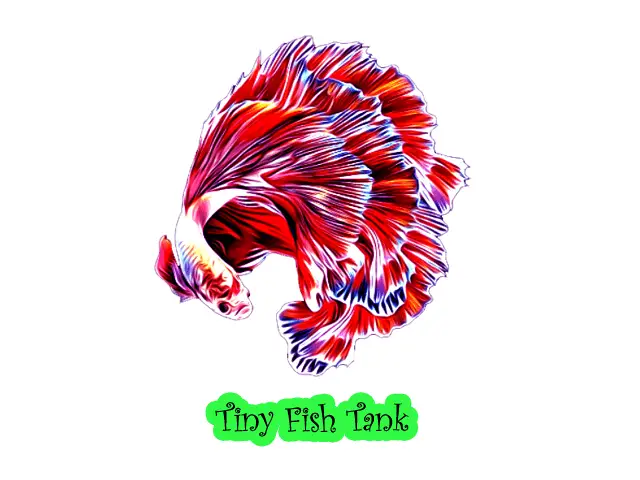
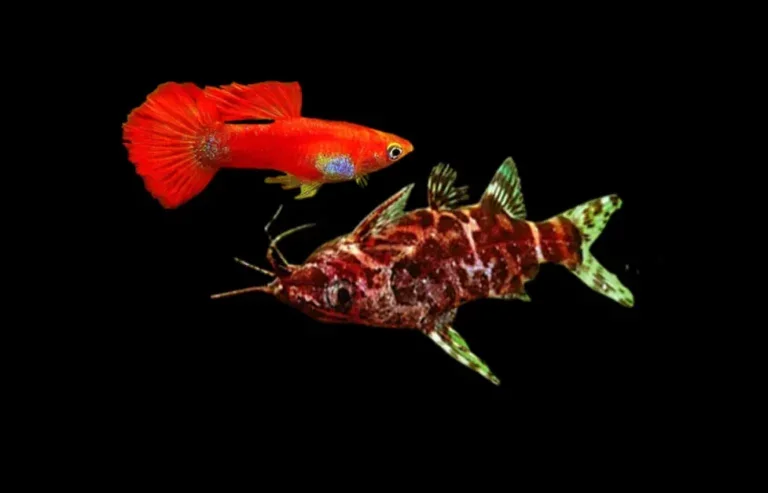
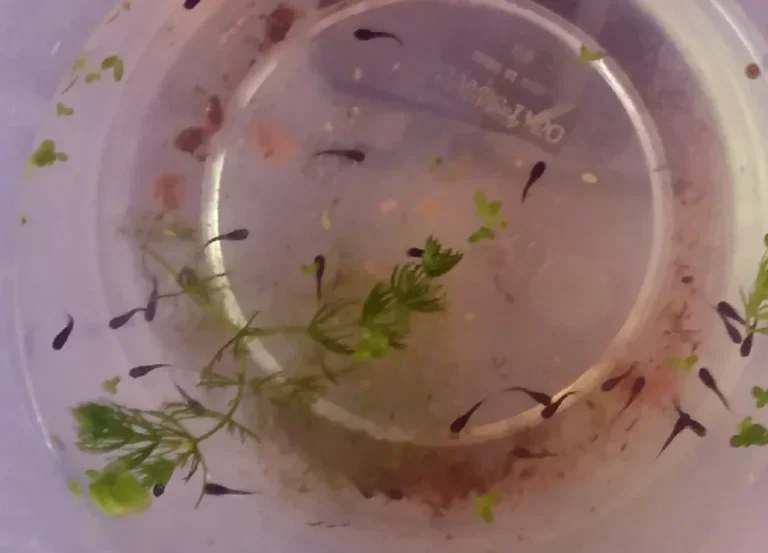
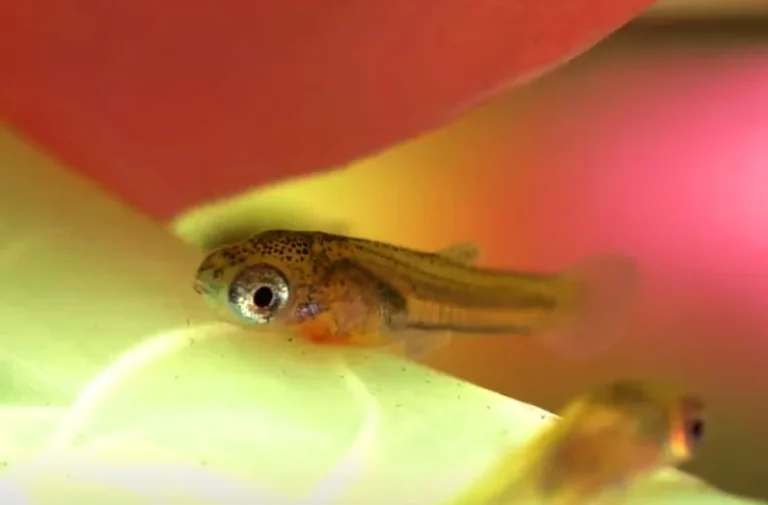
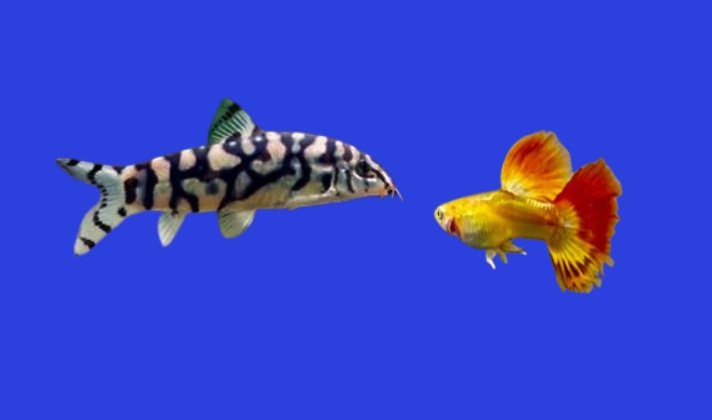
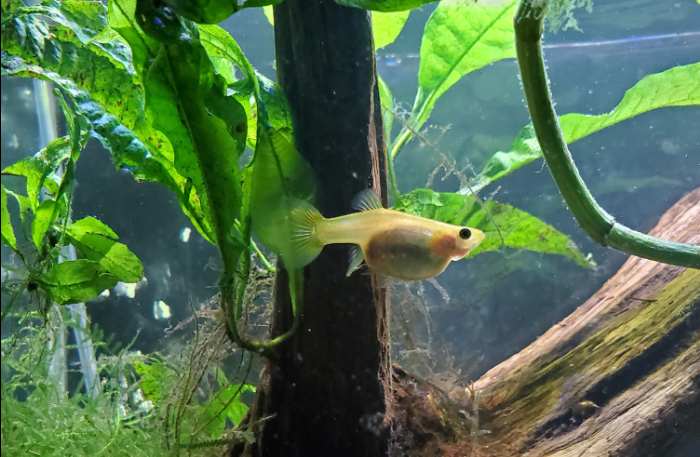
![Why Is My Guppy Turning White? [8 facts]](https://www.tinyfishtank.com/wp-content/uploads/2021/07/Why-Is-My-Guppy-Turning-White.png)